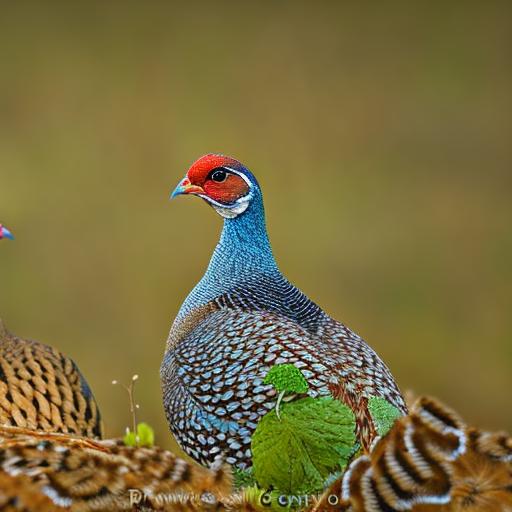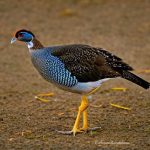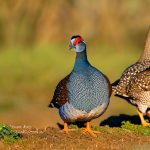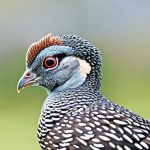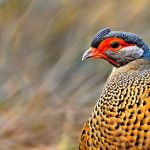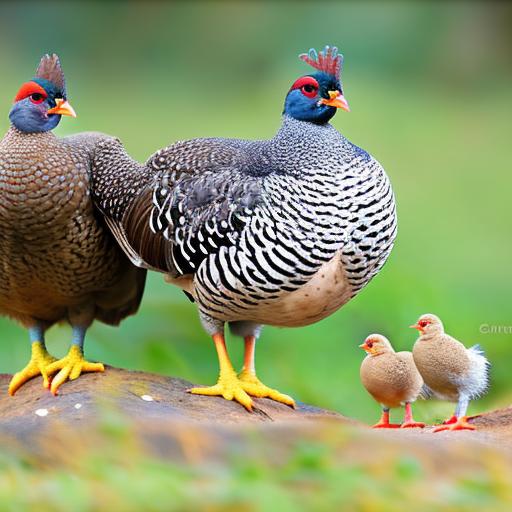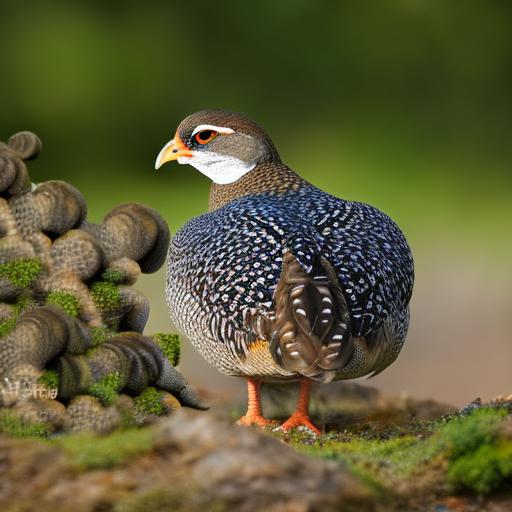Guinea fowl are known for their curious and social nature. They are highly active birds that spend most of their time foraging for food and exploring their surroundings. They are also known to be excellent foragers, often scratching and pecking at the ground in search of insects, seeds, and small plants. Guinea fowl are also highly vocal birds, often making loud calls and alarm sounds to communicate with each other and alert the flock of potential dangers. Additionally, guinea fowl are known to be highly territorial and can become aggressive towards other animals, especially during the breeding season.
Understanding the behavior of guinea fowl is crucial when it comes to managing and deterring them from unwanted areas. By understanding their foraging habits, territorial nature, and vocalizations, it becomes easier to implement effective strategies to keep them at bay without causing harm to the birds or the environment.
Guinea fowl are also known to be highly adaptable birds, capable of thriving in a variety of environments. They are often found in rural areas, farmlands, and open grasslands where they can find ample food and shelter. Their adaptability makes them a common nuisance for farmers and gardeners, as they can quickly become a pest by damaging crops, digging up gardens, and creating disturbances with their loud calls. Understanding their adaptability and preferred habitats is essential when it comes to implementing effective deterrents to keep them away from specific areas.
Key Takeaways
- Guinea fowl are social birds that exhibit flocking behavior and prefer to roost in trees at night.
- Physical barriers such as fences, netting, and hedgerows can effectively keep guinea fowl out of specific areas.
- Scare tactics like visual deterrents, noise makers, and predator decoys can startle guinea fowl and discourage them from entering certain areas.
- Sound and light deterrents such as ultrasonic devices and motion-activated lights can disrupt guinea fowl’s comfort and drive them away.
- Natural repellents like citrus sprays, garlic, and chili pepper can be used to create unpleasant scents and tastes for guinea fowl, deterring them from specific areas.
- Designating a specific feeding area for guinea fowl can help control their movement and minimize their impact on other areas.
- Professional assistance from wildlife management experts can provide effective and humane solutions for managing guinea fowl populations.
Creating physical barriers to keep guinea fowl away
One of the most effective ways to keep guinea fowl away from unwanted areas is by creating physical barriers that prevent them from accessing the area. This can be achieved by installing fences, netting, or other structures that block the birds from entering the designated area. Fences should be at least 4-6 feet high to prevent guinea fowl from flying over them, as these birds are capable of short bursts of flight. Additionally, it’s important to bury the bottom of the fence at least 6 inches into the ground to prevent guinea fowl from digging underneath it.
Netting can also be an effective physical barrier to keep guinea fowl away from specific areas. By covering crops or gardens with netting, it becomes difficult for the birds to access the plants and cause damage. It’s important to use durable and tightly woven netting to prevent guinea fowl from getting tangled or trapped in the material. Additionally, netting should be secured tightly to prevent the birds from pushing their way through.
Another physical barrier that can be effective in deterring guinea fowl is the use of scare tape or visual deterrents. These reflective materials create a visual barrier that confuses and startles the birds, making them less likely to approach the area. Scare tape can be hung around gardens, crops, or other areas where guinea fowl are causing damage. The movement and reflective properties of scare tape make it an effective deterrent without causing harm to the birds or the environment.
Using scare tactics to deter guinea fowl
Scare tactics can be an effective way to deter guinea fowl from unwanted areas without causing harm to the birds. One common scare tactic is the use of scarecrows, which are human-like figures placed in fields or gardens to frighten birds away. Scarecrows can be made from a variety of materials, including old clothes stuffed with straw or hay, and can be positioned strategically to create a visual deterrent for guinea fowl.
Another scare tactic that can be effective in deterring guinea fowl is the use of predator decoys. These decoys mimic natural predators of guinea fowl, such as owls, hawks, or foxes, and can be placed in areas where the birds are causing damage. The presence of these decoys can create a sense of danger for guinea fowl, making them less likely to approach the area.
Additionally, the use of noise-making devices can be an effective scare tactic for deterring guinea fowl. These devices emit loud noises or distress calls that startle the birds and make them less likely to stay in the area. Noise-making devices can include propane cannons, electronic bird distress calls, or even simple wind chimes that create unexpected sounds.
Implementing sound and light deterrents
Sound and light deterrents can be effective in deterring guinea fowl from unwanted areas without causing harm to the birds or the environment. One common sound deterrent is the use of ultrasonic devices that emit high-frequency sounds that are unpleasant for guinea fowl. These devices can be placed in areas where the birds are causing damage and can help discourage them from staying in the area.
Another sound deterrent that can be effective in deterring guinea fowl is the use of distress calls or predator calls. These recordings can be played at regular intervals to create a sense of danger for the birds, making them less likely to approach the area. Additionally, the use of loud noises such as clapping, banging pots and pans, or using air horns can startle guinea fowl and make them less likely to stay in the area.
Light deterrents can also be effective in deterring guinea fowl from unwanted areas. These can include flashing lights, strobe lights, or even motion-activated lights that startle the birds and make them less likely to approach the area. Light deterrents are especially effective at night when guinea fowl are roosting, as they disrupt their natural behavior and make them uncomfortable staying in the area.
Utilizing natural repellents to keep guinea fowl at bay
Natural repellents can be an effective way to keep guinea fowl at bay without causing harm to the birds or the environment. One common natural repellent is the use of strong-smelling plants or herbs that are unpleasant for guinea fowl. These can include lavender, mint, rosemary, or garlic, which can be planted around gardens or crops to create a natural barrier that deters the birds from approaching.
Another natural repellent that can be effective in deterring guinea fowl is the use of spicy or pungent substances such as chili powder or hot pepper spray. These substances can be sprayed on plants or around the perimeter of an area to create a deterrent that is unpleasant for guinea fowl. It’s important to reapply these natural repellents regularly, especially after rain or watering, to maintain their effectiveness.
Additionally, the use of natural predators such as dogs or cats can help deter guinea fowl from unwanted areas. The presence of these animals creates a sense of danger for the birds, making them less likely to approach the area. It’s important to ensure that any animals used as natural deterrents are well-trained and supervised to prevent harm to the guinea fowl or other wildlife.
Establishing a designated feeding area for guinea fowl
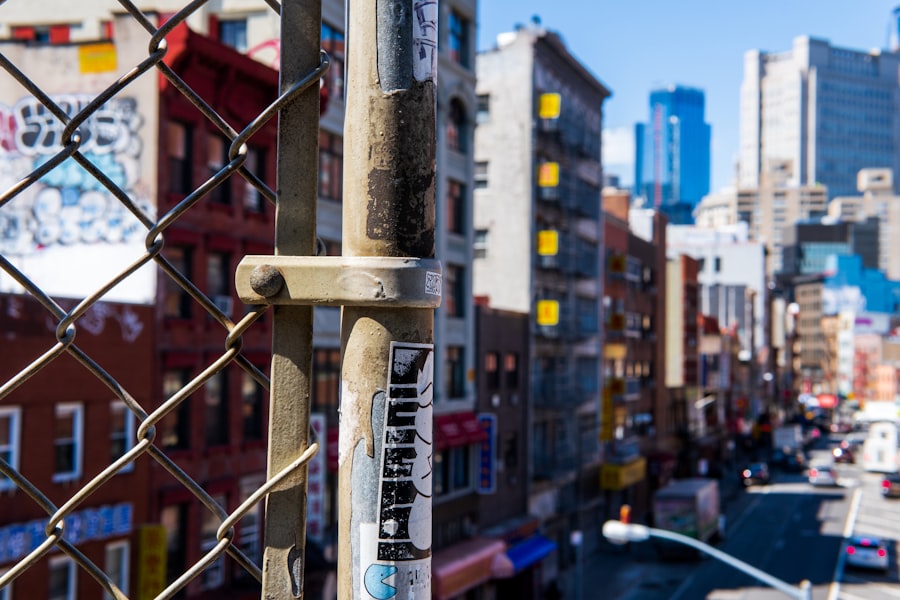
One effective way to manage guinea fowl on your property is by establishing a designated feeding area for the birds. By providing a specific location where guinea fowl can find food and water, you can help reduce their impact on other areas of your property. This designated feeding area can include bird feeders with seeds and grains that are attractive to guinea fowl, as well as water sources such as shallow dishes or birdbaths.
By providing a consistent source of food and water in a specific location, you can help encourage guinea fowl to spend more time in that area and reduce their impact on other parts of your property. This can be especially helpful for farmers and gardeners who want to protect their crops and gardens from damage caused by foraging guinea fowl.
It’s important to regularly maintain and replenish the designated feeding area to ensure that guinea fowl continue to be attracted to that location. By providing a reliable food source, you can help manage the behavior of guinea fowl on your property and reduce their impact on other areas.
Seeking professional assistance for guinea fowl management
In some cases, managing guinea fowl on your property may require professional assistance. There are wildlife management companies and pest control services that specialize in managing nuisance bird species such as guinea fowl. These professionals have experience and expertise in implementing effective deterrents and management strategies that are tailored to your specific situation.
Professional assistance may be necessary if you are dealing with a large population of guinea fowl or if they are causing significant damage to your property. Wildlife management companies can conduct thorough assessments of your property and develop comprehensive management plans that address the specific behaviors and habits of guinea fowl in your area.
Additionally, professional assistance may be necessary if you are dealing with legal or ethical considerations related to managing guinea fowl on your property. Some regions have regulations and guidelines regarding the management of wildlife species, including guinea fowl, and it’s important to ensure that any management strategies comply with local laws and regulations.
Overall, seeking professional assistance for guinea fowl management can provide you with peace of mind and help ensure that you are implementing effective and humane strategies for deterring these birds from unwanted areas on your property.
Looking for ways to keep guinea fowl away from your property? Check out this informative article on PoultryWizard that offers practical tips and strategies. Whether you’re dealing with guinea fowl or other poultry-related challenges, this resource provides valuable insights to help you protect your space and maintain a peaceful environment.
FAQs
What are guinea fowl?
Guinea fowl are a type of bird native to Africa. They are known for their distinctive spotted feathers and loud, chattering calls.
Why would someone want to keep guinea fowl away?
Guinea fowl can be noisy and may cause damage to gardens and crops. Some people also find their calls to be disruptive.
What are some methods for keeping guinea fowl away?
Some methods for keeping guinea fowl away include using visual deterrents such as scarecrows or reflective tape, using noise deterrents such as loud noises or predator calls, and using physical barriers such as fences or netting.
Are there any natural deterrents for guinea fowl?
Some natural deterrents for guinea fowl include planting dense shrubs or using natural predators such as dogs or cats to keep them away.
Are there any legal restrictions on keeping guinea fowl away?
It is important to check local regulations and laws before using any methods to keep guinea fowl away, as some methods may be restricted or prohibited in certain areas.
Meet Walter, the feathered-friend fanatic of Florida! Nestled in the sunshine state, Walter struts through life with his feathered companions, clucking his way to happiness. With a coop that’s fancier than a five-star hotel, he’s the Don Juan of the chicken world. When he’s not teaching his hens to do the cha-cha, you’ll find him in a heated debate with his prized rooster, Sir Clucks-a-Lot. Walter’s poultry passion is no yolk; he’s the sunny-side-up guy you never knew you needed in your flock of friends!

